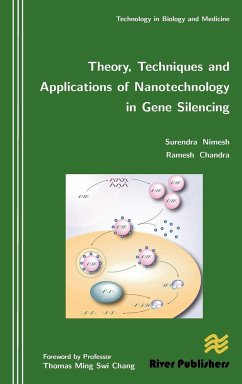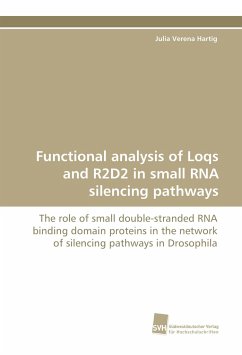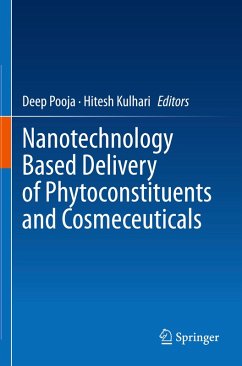
Theory, Techniques and Applications of Nanotechnology in Gene Silencing
Versandkostenfrei!
Versandfertig in 1-2 Wochen
140,99 €
inkl. MwSt.
Weitere Ausgaben:

PAYBACK Punkte
70 °P sammeln!
Gene silencing mediated through short interfering RNAs (siRNAs) is rapidly emerging as a new class of therapeutics for the treatment of inherited and acquired diseases. However, poor cellular uptake and instability in physiological conditions limits its therapeutic potential, hence there arises a need to develop a delivery system which can protect and efficiently transport siRNA to the target cells. Nanotechnology based non-viral vectors have been proposed as a potential alternate. Various polymeric nanoparticles have been shown as suitable delivery candidates with high cellular uptake efficie...
Gene silencing mediated through short interfering RNAs (siRNAs) is rapidly emerging as a new class of therapeutics for the treatment of inherited and acquired diseases. However, poor cellular uptake and instability in physiological conditions limits its therapeutic potential, hence there arises a need to develop a delivery system which can protect and efficiently transport siRNA to the target cells. Nanotechnology based non-viral vectors have been proposed as a potential alternate. Various polymeric nanoparticles have been shown as suitable delivery candidates with high cellular uptake efficiencies and advantage of reduced cytotoxicity. These delivery vectors form condensed complexes with siRNA which in turn provides protection to siRNA from enzymatic degradation and further leads to enhanced tissue and cellular targeting. Nanoparticles prepared from various polymers like polyethylenimine, chitosan have been largely exploited, as they bear several advantages such as, easy manipulatibility, high stability, low cost and high payload. Though numerous publications have appeared in the literature, there was still need to get more information under one roof, as book compilation which could provide a systematic account of all the aspects of nanotechnology mediated gene silencing right from the preparation of nanoparticles to in vitro and in vivo characterization followed by various applications in vitro and in vivo models. This book focuses on various aspects of nanotechnology based gene silencing. The initial chapters detail the techniques available for in vitro and in vivo characterization of nanoparticles. In the later chapters, exhaustive details about various polymeric systems employed for gene silencing has been accounted. The important topics discussed in the book include: ¿ Introduction to Nanotechnology ¿ Physicochemical Characterization of Nanoparticles ¿ In Vitro and In Vivo Characterization of Nanoparticles ¿ Concept and Barriers to Gene Silencing ¿ Nanoparticles Mediated Targeted siRNA delivery ¿ Polymers for siRNA Delivery ¿ Chitosan ¿ Polyethylenimine ¿ Poly-L-lysine ¿ Atelocollagen ¿ Protamine ¿ Dendrimers ¿ Cyclodextrin ¿ Poly (D, L-lactide-co-glycolide) ¿ Nanomaterials for siRNA delivery













